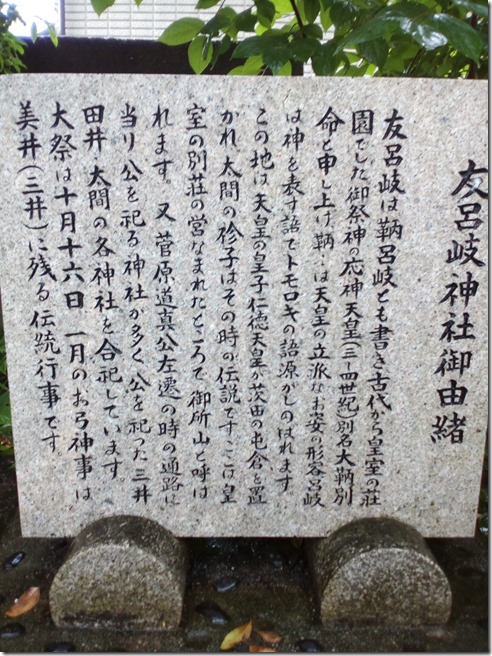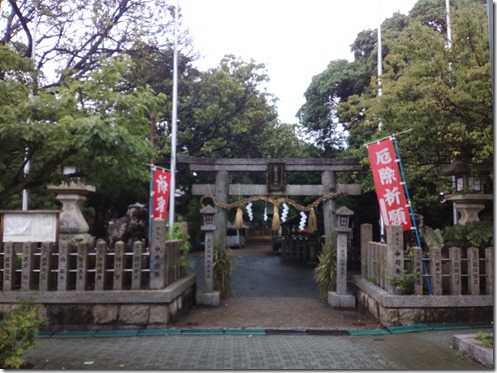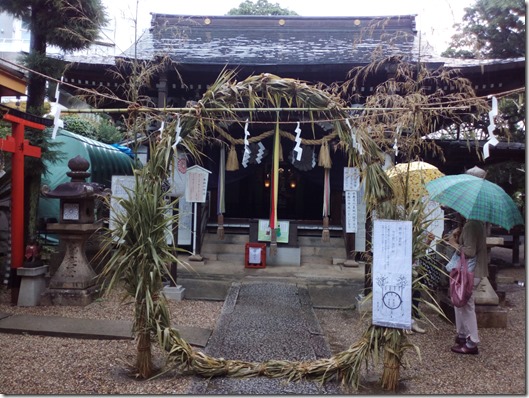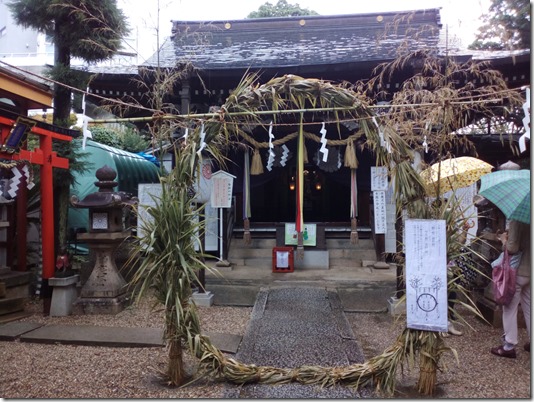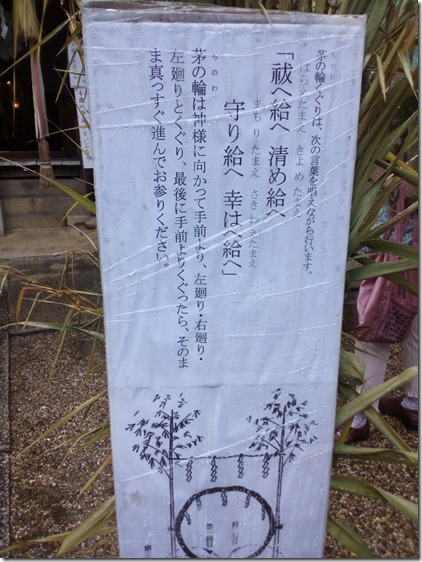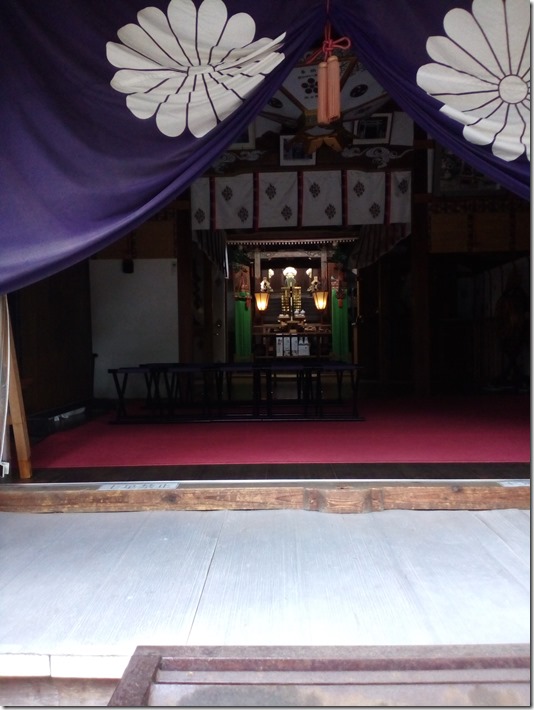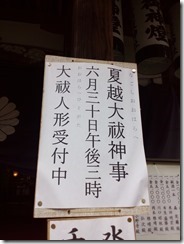大祓神事
今日6月30日は「夏越しの大祓い」の日
京阪香里園駅から南東へ徒歩7・8分の所に友呂岐神社がある。小生が前に住んでいた家からも徒歩7・8分のところで、七五三参りや、お正月の初詣など大方の神事は、この友呂岐神社にお参りして来た。その為か、氏子になっている訳ではないが、年に何回か神事の案内がくる。そのひとつが大祓神事。何時もは略式で、紙人形に名前と年齢を書き、それを神社に持って行き、お祓いをして貰っていたが、今日は何故か行ってみたくなり、女房と一緒に小雨の中、友呂岐神社に足を運んだ。
友呂岐神社の由来
「夏越の大祓」は「水無月大祓(みなづきおおはらえ)」とも言い、穢れを人形(ひとがた・人の形に紙を切り抜いたもの)に託して、茅の輪をくぐり、心身を清め、「大祓詞(おおはらえのことば)」という祝詞(のりと)を唱え、罪や穢れを祓い、年越の大祓までの半年を新たな気持ちで過ごすことができるように祈る神事です。
6月は、夏の暑さがはじまり、心身が疲れたり気力が衰えるなどし、病気の流行期と考えられており、これからくる夏を病気などをせずに乗り越えられるようにという願いが込められています。
小雨のなか、「祓えたまえ、清めたまえ、守りたまへ、さきわえたまへ」とつぶやきながら、手前から左回り、右回り、左回りし、正面に向かって二礼、二拍手、一礼を深々とし、罪と穢れを祓い、今年後半の幸を願って来た。
これで、今年の残り半年は何の心配も無く、元気はつらつ、幸おおい日々を過ごすことが出来る。

「大祓」は、人が知らず知らずのうちに犯した諸々の罪や過ちや、心身の穢れを祓い清めるものです。
大祓の「大」は「公」という意味があり、個人だけのものではなく、日本国中の穢れを祓うという意味があります。
大祓には「夏越の大祓(なごしのおおはらえ)」と「年越の大祓(としこしおおはらえ)」があります。
夏越の大祓は毎年6月30日に、年越の大祓は毎年12月31日に行われます。
日本神話の伊弉諾尊(いざなぎのみこと)の禊祓い(みそぎはらい)を起源としており、西暦701年の大宝律令(たいほうりつりょう)によって正式な宮中の年中行事に定められました。
Today, June 30, is the day of ‘Summer Exorcism’.
Tomoroki Shrine is located 7 or 8 minutes walk to the southeast from Keihan Kourien Station. It is only a 7 or 8 minute walk from the house where I used to live, and I have visited this shrine for most of the rituals such as the Shichigosan visit and the New Year’s visit. For this reason or not, I am not a member of the clan, but I receive a guide to a ritual several times a year. One of them is the Great Exorcism Ceremony. I usually wrote my name and age on a paper doll, took it to the shrine and had it purified, but today, for some reason, I wanted to go there, so I went to Tomoroki Shrine with my wife in the light rain.
Natsukoshi-no-oharai’ is also called ‘Minazuki-oharai’, which means ‘Natsukoshi-no-oharai’. It is a Shinto ritual where people leave their impurities to dolls (cut out of paper in the shape of a human being), walk through a circle of thatch, purify their mind and body, chant ‘Oharai no koto’ (words of purification), and pray that they will be able to purify their sins and impurities and spend half a year until Natsukoshi-no-oharai with a new mind.
The month of June is considered to be an epidemic season for illnesses, as the summer heat begins and the body and soul become tired and weak.
Daigoe is to purify the sins and mistakes that people have unknowingly committed, as well as the defilement of mind and body.
The word “Dai” in “Daiei” in “Daiei” means “public” and it means not only for individuals, but also to drive away the defilement of the whole country.
There are two types of rituals, ‘Nagoshi-no-oharai’ and ‘Toshikoshi-no-oharai’.
Natsukoshi-no-oharae (summer purification) is held on June 30 every year, and Natsukoshi-no-oharae (yearly purification) is held on December 31 every year.
The ceremony originated from the Japanese mythological purification ceremony of Izanagi no Mikoto, and was designated as an official annual event by the Taiho Ritsuryo (701 A.D.).


